A New Day for Rivercane
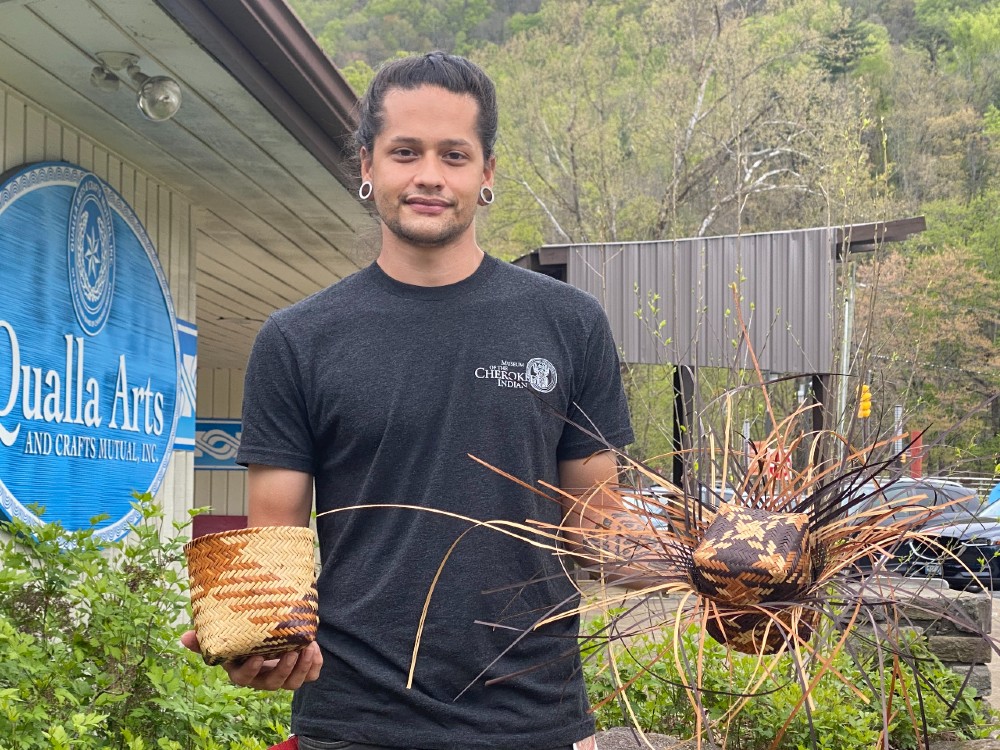
By Rose Jenkins Lane
Cherokee rivercane baskets have been getting smaller. These days, an intricately woven basket might be only the diameter of an apple! Artisans have been making some baskets smaller to make the most of the rivercane, because there’s so little left to harvest.
Even Dylan Morgan, a 26-year-old who has been making baskets for less than five years, has seen the decline in rivercane. He says, “I’d hate to get so in love with this craft, to spend so much time learning, just for it to—pfft—be gone, just like that.”
A Fire for Basket Making
Dylan comes from a family of wood carvers, and he took up that craft, but he felt that he couldn’t match the carving skills of his father and older brother. He says, “I felt like it was just shoes I had to fill with wood carving.”
He was doing woodcarving demonstrations at the Museum of the Cherokee Indian, in Cherokee, NC, but during breaks, he would spend time with another artisan—Lucille Lossiah, a master basket maker. Lucille has been making baskets since she was a little girl, practicing the craft passed down by her mother and grandmother.
Lucille says her mother made her learn the whole process. First you harvest the rivercane. Then you split the stalks and slice them into thin strips. You color those splints with dyes made from yellowroot, bloodroot, butternut, and walnut. Finally, you can weave your basket. Even as a child, she wasn’t allowed to weave with splints that her mother had prepared.
“My mother taught me that I had to make my own splints,” Lucille says. “I didn’t use what she was making because, in her words, I wouldn’t be learning anything. I had to do my own work.”
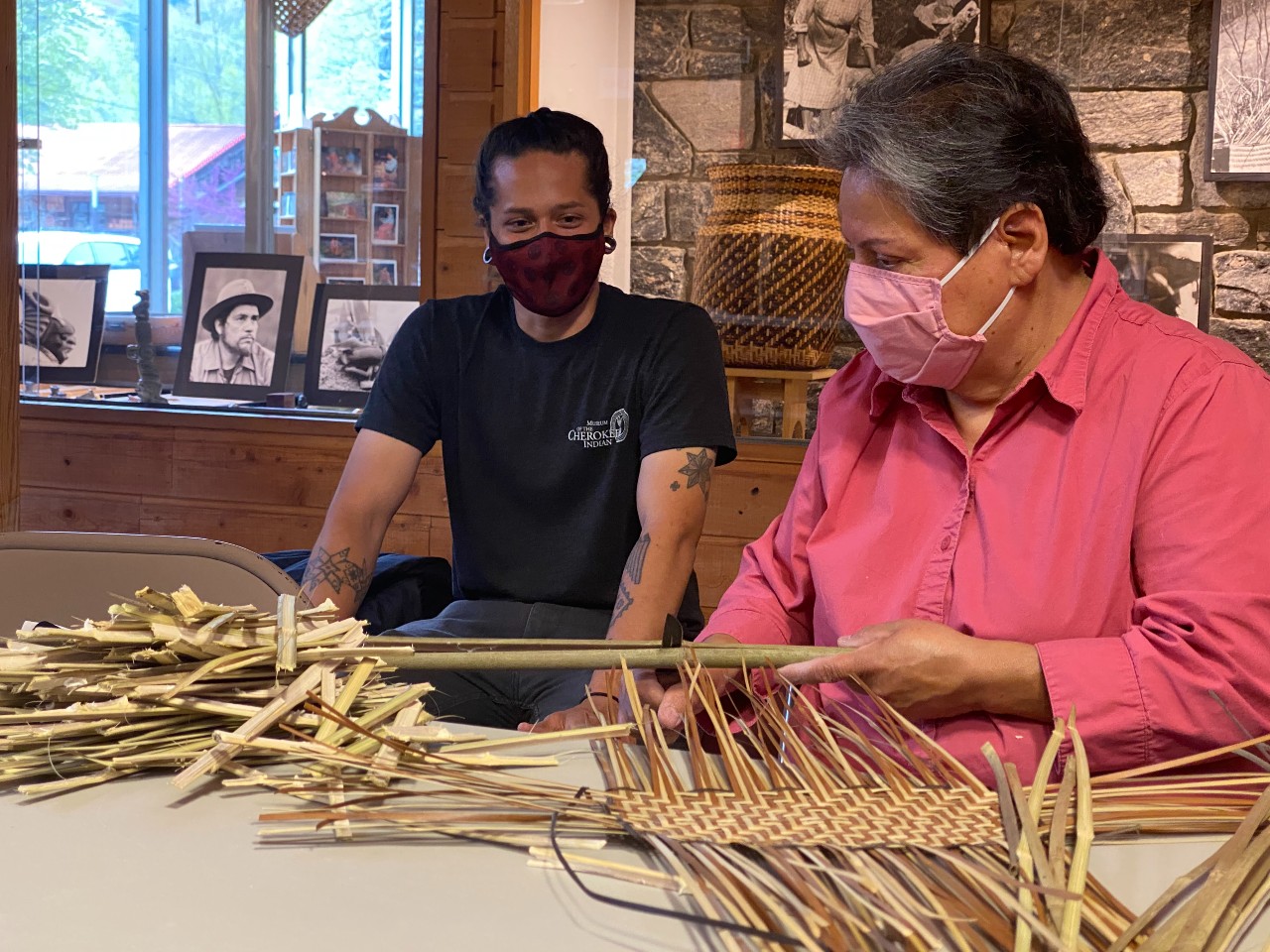
Dylan started spending time with Lucille and other basket makers at the museum. “I’m sitting there watching her weave 100 miles a minute and it would intrigue me, how easy she made it look. She’d be sitting there looking at you and still weaving. Getting to sit down there with them and listening to them talk about her process—it was just really cool to have a whole new door up to you, something different and new.”
Dylan says, “We’ve got 101 woodcarvers any way you look, but when it comes to basket makers that’s slowly getting less and less. So that gave me a really big fire to want to be just like them. I want to preserve it and I want to pass it on.”
Visit to a Canebrake
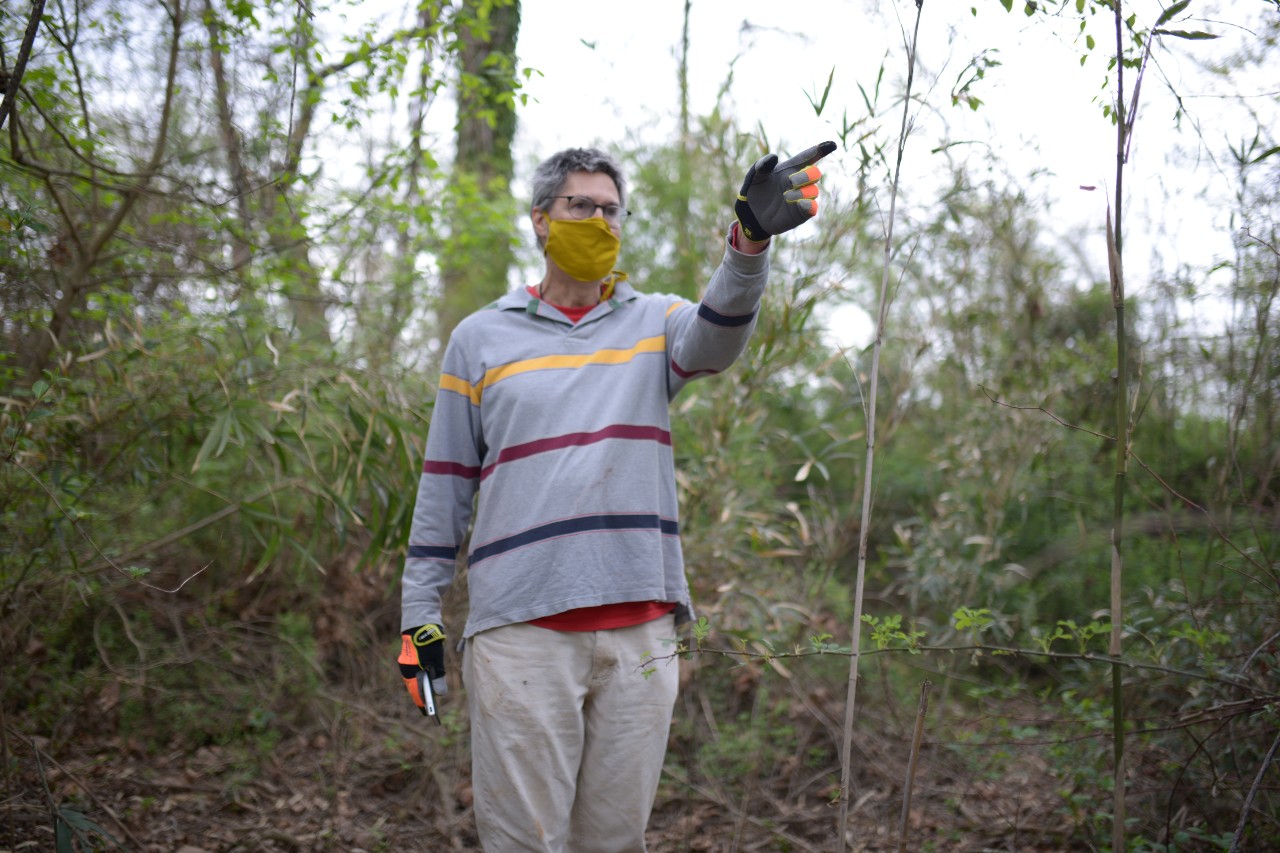
Rivercane—called ih-ya in Cherokee—is a species of native bamboo that used to grow in vast canebrakes along rivers and creeks. It’s not the only material used in Cherokee baskets, but many people consider it the most traditional. Dylan loves rivercane for the way it takes on the natural dyes—the dark, pale, gold, and red earth tones.
This spring, two teachers of Cherokee language and culture, Hartwell Francis and Bo Taylor, met with conservationists at a stand of rivercane at the Mouth of Mud Creek. This restoration site, managed by Conserving Carolina, is located in Mills River, on the banks of the French Broad River.
Adam Griffith, who leads an initiative called Revitalization of Traditional Cherokee Artisan Resources, showed how the rivercane can be used for crafts such as baskets and blowguns.
Bo says, “It was kind of like plastic. You could do a lot of things with it. You could make mats for sleeping on. They could take the saplings to help weave into the houses and put wattle and daub up. It was very utilitarian. Europeans, they thought of it more of a nuisance, and tried to get rid of it. So, it’s hard for artisans to find it. Back in the day it was all over the place.”

Early settlers converted canebrakes into farm fields. But, even in recent years, artisans have seen the cane disappear. Fields are pushing closer to rivers. Roads go in beside waterways. More land gets developed. Some people mistake native rivercane for invasive bamboo (which is wider and taller) and try to get rid of it.
Today, traditional basket makers like Lucille and Dylan find themselves traveling further down backroads in search of sites to harvest cane. Many limit how much cane they take, to preserve the dwindling resource. So, they weave smaller baskets.
Can you help restore rivercane? If you know of a property with rivercane that might provide a resource for Cherokee artisans, contact Adam Griffith with Revitalization of Traditional Cherokee Artisan Resources at [email protected]. To learn how to identify rivercane vs. invasive bamboo, see this guide.
Tradition on the Brink
A Cherokee double-weave basket can mystify viewers. A basket can have one pattern on the inside and a different pattern on the outside. How is possible to weave two patterns into a single basket?
The secret is that it’s actually two baskets seamlessly connected. After weaving the first basket, the artisan folds over the splints and keeps weaving to create an outer basket that encloses the inner basket. A basket with a tight weave can actually hold water.
Simple baskets would have been used for day-to-day tasks, but an ornate basket would have been regarded as a deeply generous gift, Dylan says. Such a gift could even strengthen diplomacy, for example, when presented to a neighboring tribe.
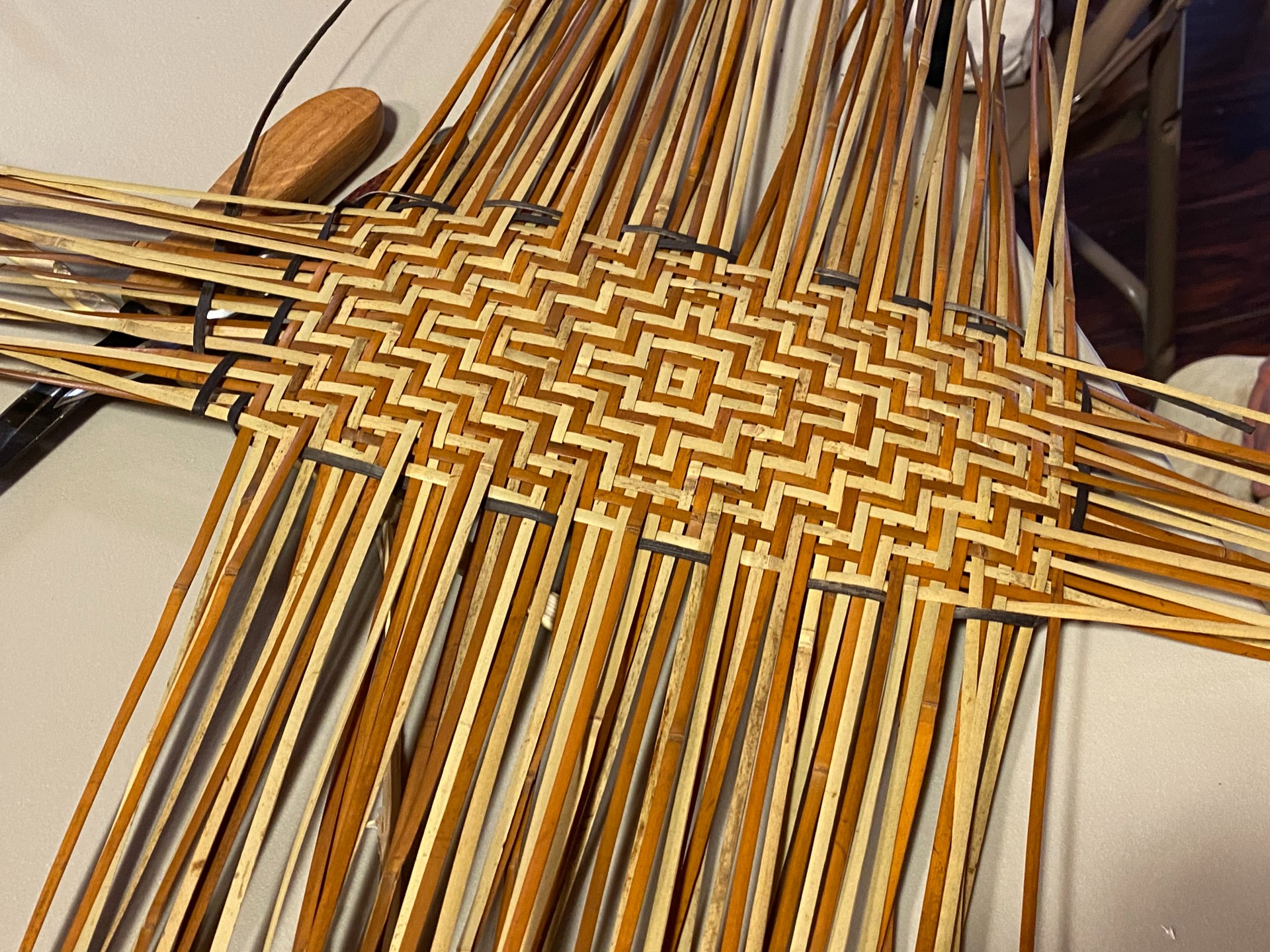
Double-weave basket making had nearly died out by the mid-twentieth century, with only a few living artisans who could make them. One teacher, Lottie Queen Stamper, painstakingly recreated the technique from samples in museums.
Cherokee basket makers revived the technique and passed it on. But traditional basket makers are still rare—especially those like Lucille and Dylan who start with the living plants and carry out every step to the finished basket.
When Dylan and his friend, Gabe Crowe, gather with other basket makers, they often find themselves among elders like Lucille.
Those elders are overjoyed to see them carrying on the tradition, Dylan says. His grandmother was thrilled when he took up the craft, which his great-grandmother had practiced.
But to make rivercane baskets, you need cane. In living memory, there were canebrakes that stretched for miles. Now artisans are finding smaller and smaller, sometimes overharvested patches.
A recent study found that only 2-3% of the rivercane that once flourished here still remains. “That opened my eyeballs,” Dylan says. “When they come back and said there’s 2-3%, I looked at everybody and said, ‘You realize that’s slim to none of the amount of rivercane that could have been around. It’s about to be on the endangered species list.’”
He says, “There’s a bigger thing of wanting to help preserve it and work with it—saving it not only for Native Americans, but for future generations in general, for the Earth itself to have the cane here that was once growing.”

Spreading Roots
The good news is that rivercane will spread vigorously when given the chance. Underground, rivercane sends out horizontal roots. The stalks that you see spurt upward from those spreading roots. What limits rivercane’s expansion is often mowing or a road that compacts the soil.
As part of the natural floodplain restoration at the Mud Creek, Conserving Carolina is working to expand an existing stand of rivercane. Last year, Conserving Carolina completed construction of sloughs and wetlands on the 103-acre restoration site. The land trust also planted native trees and a pollinator meadow.
Now, where rivercane is growing, they are removing saplings that compete with the cane. They also avoid mowing nearby, so the cane has room to stretch out. With funding from the Cherokee Preservation Foundation, they are developing a rivercane management plan and educational signage in Cherokee and English.
This funding is coordinated through Revitalization of Traditional Cherokee Artisan Resources, which Adam heads. This initiative supports the restoration of culturally important species, including rivercane, throughout the Southeast.
Related Article: Art from the Earth: Nature Preserves Provide Traditional Materials for Cherokee Artists.
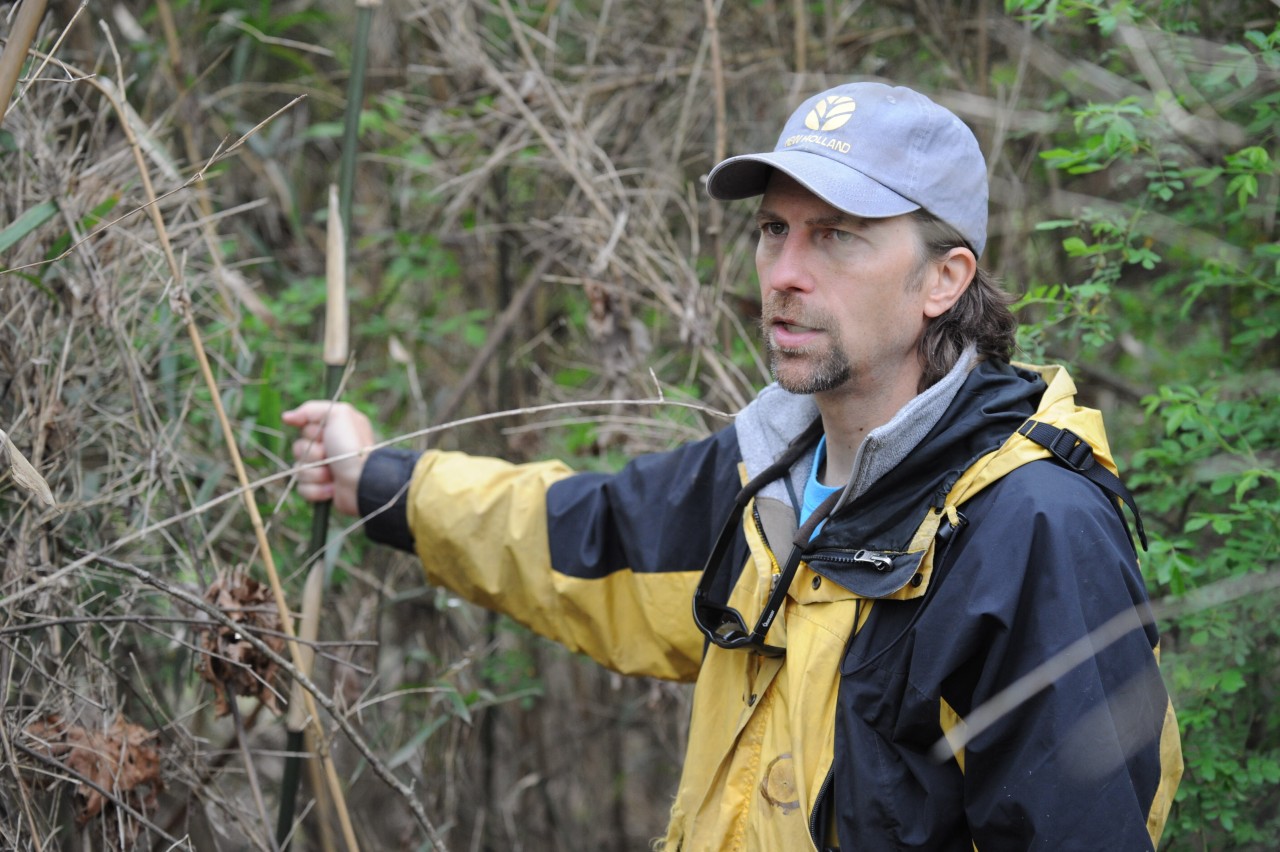
In addition to supplying artisans, canebrakes stabilize riverbanks with their dense root networks. This helps water quality by preventing soil erosion. Canebrakes also provide habitat for many kinds of animals. Because they provide such rich habitat, they were once plentiful hunting grounds for the Cherokee.
Adam Griffith first saw the canebrake at Mud Creek two years ago. ”Just in that amount of time, we’ve seen it expand quite a bit,” he says.
Still, it will take years for the cane to grow to the point that it can be sustainably harvested. David Lee, Conserving Carolina’s Natural Resources Manager, says the hope is that artisans can begin to harvest rivercane from Mud Creek in about five years.
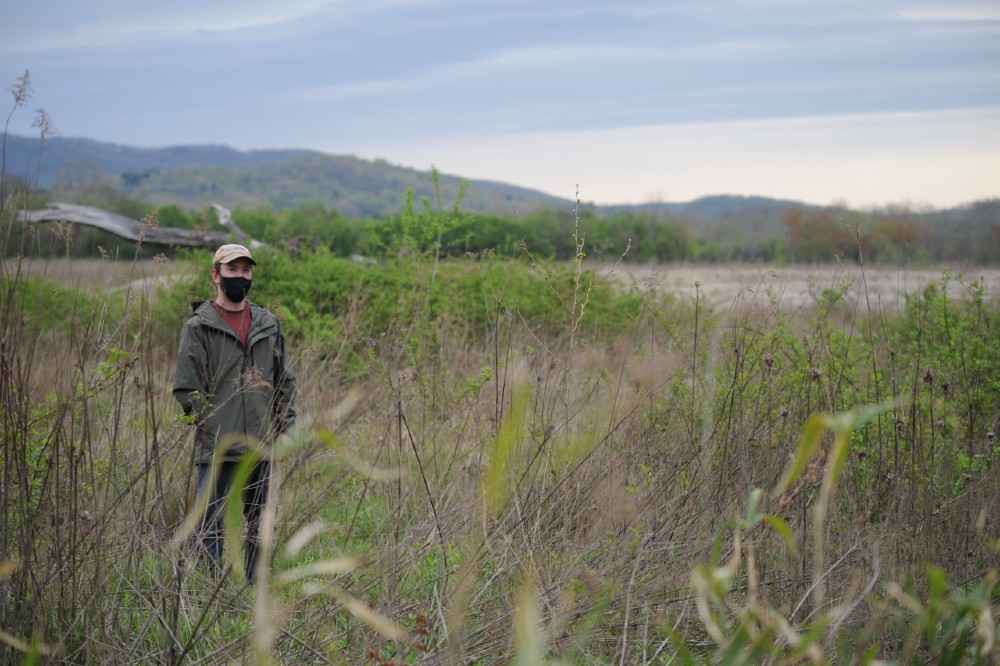
The Noon Day Star
Thick stands of cane along rivers provide the material that Dylan loves for making colorful patterns. “Some of the patterns have their own stories and values and meanings,” he says. There’s also room for creativity. You can make your own patterns and find your own story in traditional patterns.
One of his favorite patterns is replicated in a tattoo on his forearm. It’s called the Noon Day Star, and it features an eight-pointed star within a diamond pattern—representing the sun at the peak of the sky. To Dylan, it calls to mind how, in Cherokee culture, people orient toward the sun.
“A lot in our culture had to do with facing east,” he says. “Whenever you had houses built, the front doors would be facing east. The council house doors would be facing east. When you got married, your feet are facing east. That was where your new day started.
“We call it the Noon Day Star, but what that pattern means to me is just like that: you’re always looking for your new day. You’re not looking at yesterday. You can’t go in the past, can’t be dwelling over something small. Because I used to be really bad on that. I used to be just stuck in the past, living with things that were bugging me left and right.
“I used that pattern on me as my way of thinking, ‘Don’t worry about yesterday, get your stuff done today and worry about tomorrow. Just keep going, keep focusing.”
He says, “That’s how we used that story of the noon day star. At noon, that’s when it’s at its highest peak. That’s when it’s shining the brightest over everybody. You’re looking at it and you’re watching it fall to the west to sunset. That’s when we’re all focusing east to tomorrow, to the new day.”

This article is part of our Stories of the Land series, which is published in the Hendersonville Times-News and other local media. These stories explore people’s connection to the land and the ways they give back. They are written by Rose Jenkins Lane, the communications director of Conserving Carolina. Conserving Carolina works to protect, restore, and inspire appreciation of our natural world.